Interview with a Pool Builder
David Metzger of Marin Pool Service has been in the pool industry for all of his adult life and has built pools in Novato, San Rafael, Mill Valley, San Anselmo, Fairfax, Tiburon, Larkspur, and most of the other towns in Marin County. We wanted to interview him to get some idea of what goes into a pool build project.
Interviewer: David, thanks for taking the time to sit down with us.
David: My pleasure; one of my great happiness in life is helping homeowners find success in having a pool built for them and their families to enjoy.
When a person first starts to think about building a pool, what should they consider?
 David: So many options can go into a pool now. I really want them to have an idea of what they want from their experience in the pool. What I mean is do they want a built-in hot tub, how about water features, is this something for the kids to play in, or are they using it for exercise? Do they want a deep pool or a shallow one? I know it sounds cliché, but what’s their dream pool?
David: So many options can go into a pool now. I really want them to have an idea of what they want from their experience in the pool. What I mean is do they want a built-in hot tub, how about water features, is this something for the kids to play in, or are they using it for exercise? Do they want a deep pool or a shallow one? I know it sounds cliché, but what’s their dream pool?
What is the average size of a pool?
David: A typical backyard pool is 16’x32′ with an average depth of 5.5′ and holds about 20,000 gallons. A lap pool, 8’x45′ and about 4′ deep, holds around 11,000 gallons on average. Many people opt for sports pools, 16’x32′, where each end is 3.5′ deep, and the middle is 5.5′ for playing volleyball and basketball, holding about 18,000 gallons. Then, there are free-form pools that don’t follow a set pattern but are open to the imagination.
After you get an idea of what they want, what’s next?
David: Again, that, in large part, depends on what they want. They can start with a basic layout for a simple backyard pool in a relatively flat backyard. Sometimes, laying out a garden hose in the yard to see how big or what design fits well is a good start. For some, this is all they need along with a set of plans. For others, a landscape architect may be necessary to help with the pool layout, outdoor kitchen, fire pit, landscape, and lighting. From there, a set of plans for the pool is developed.
In Marin, there are a lot of backyards on hillsides. Can a pool be built there?
 David: The short answer is yes. This is where a landscape architect and maybe a structural engineer are needed. They can help in determining layout, retaining walls, drainage, and reshaping a hill through excavation. Then, the pool engineer would need soil samples to determine if the pool needs a big footing or if pilings would be needed. So, the front-end time needed is longer before you can actually start digging.
David: The short answer is yes. This is where a landscape architect and maybe a structural engineer are needed. They can help in determining layout, retaining walls, drainage, and reshaping a hill through excavation. Then, the pool engineer would need soil samples to determine if the pool needs a big footing or if pilings would be needed. So, the front-end time needed is longer before you can actually start digging.
What are features that you like or suggest to clients?
David: There are a couple that I personally like; beach areas are one of them; they often replace the first step into a pool with a large shallow area, great for setting up a lounge or chairs. Most of the time, I like to have an umbrella hole or two built-in, so you can add shade if you want. They also help with the heating of the pool, since the shallow water heats up faster. I also like benches in the deep end to sit and rest or talk. If you can, I also like a water feature that I can stand or sit under and just have the water pour over me.
What type of equipment do you recommend?
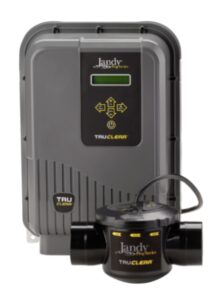 David: We use Hayward, and Pentair, but we have had the best results with Jandy as a manufacturer. They have an excellent warranty and their customer service is second to none. In California, for the conservation of electricity, you should use a Variable speed pump; the size depends on the size of the pool and the features. The heater should be sized for the pool with consideration taken for if you have a hot tub that you want to heat quickly. If you have voltaic solar, you might want to use a heat pump for heating your water. It does not do the job as fast as a gas heater, but you are using a renewable energy source. The reason I like to have a heater is that it extends your swimmable month by about two, making your pool more available. Solar panels for heating pool water is another feature that I suggest a lot if you have a sunny area for them.
David: We use Hayward, and Pentair, but we have had the best results with Jandy as a manufacturer. They have an excellent warranty and their customer service is second to none. In California, for the conservation of electricity, you should use a Variable speed pump; the size depends on the size of the pool and the features. The heater should be sized for the pool with consideration taken for if you have a hot tub that you want to heat quickly. If you have voltaic solar, you might want to use a heat pump for heating your water. It does not do the job as fast as a gas heater, but you are using a renewable energy source. The reason I like to have a heater is that it extends your swimmable month by about two, making your pool more available. Solar panels for heating pool water is another feature that I suggest a lot if you have a sunny area for them.
What is the difference between a Saltwater pool and a Freshwater pool?
David: I get asked this a lot. Freshwater pools depend on store-bought chlorine to disinfect water and keep it free of algae, bacteria, and other health-harming organisms. Saltwater pools rely on an electrolytic chlorine generator (ECG), and I personally like the Jandy TrueClear system. They all work about the same; the generator separates the salt in the pool water into its two primary elements, one of which is chlorine. The chlorine is then circulated into the pool to sanitize and disinfect the water.
There are two main reasons I like to use saltwater. It feels great; the water has a silky quality and it doesn’t sting eyes or discolor hair like the water in freshwater pools can. It’s also easier to keep a constant chlorine level. Generally, with a freshwater pool, you add chlorine once a week, so you have to add enough chlorine so that when you add again next week, there is still some chlorine left in the water. With a saltwater pool, it is constantly adding chlorine as the pool pump is on, making it so you don’t have peaks and valleys of chlorine levels.
Learn more about saltwater pools here.
One last question: How do I get a hold of you to help with the planning of my pool?
David: Just give me a call at Marin Pool Service, and I would be happy to help.

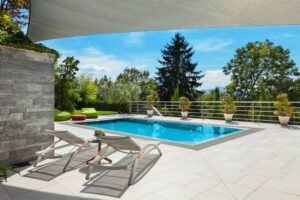

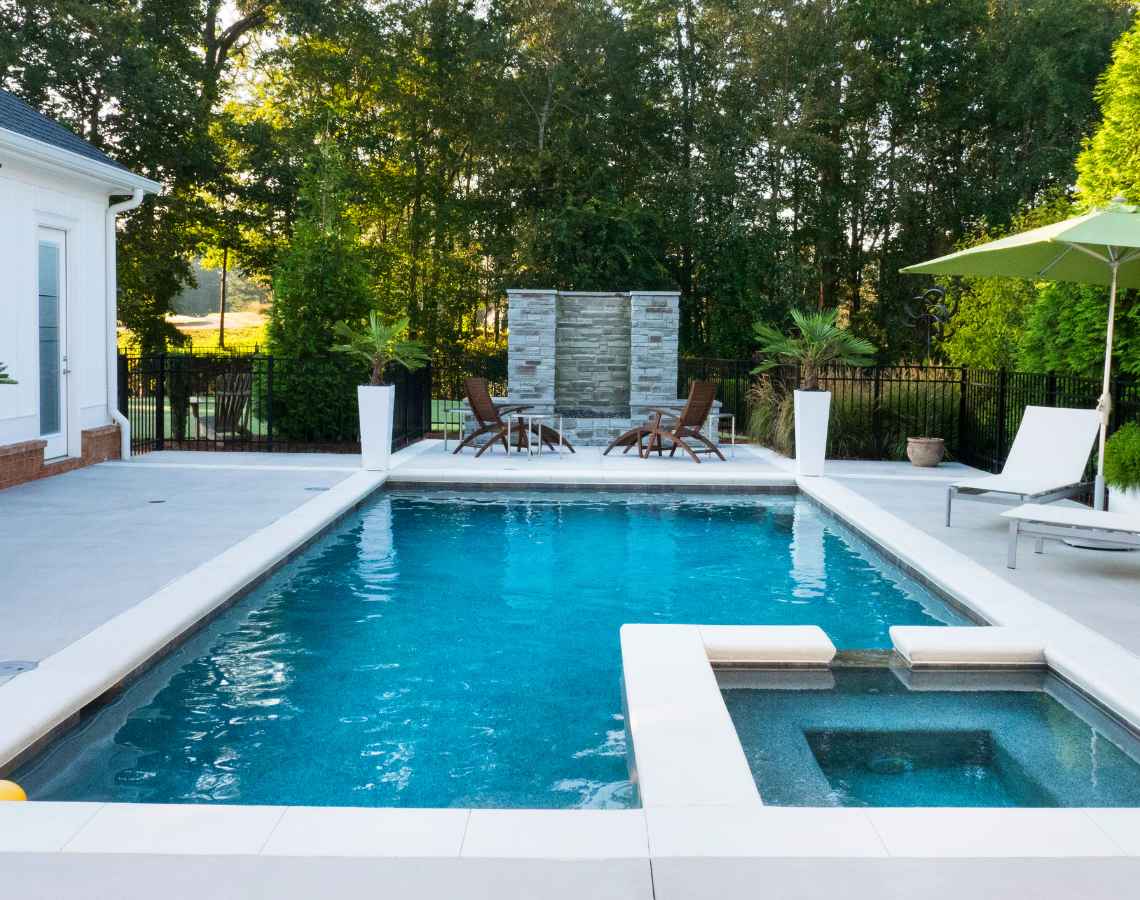

 Alex Cota
Alex Cota  Sophie Pekic
Sophie Pekic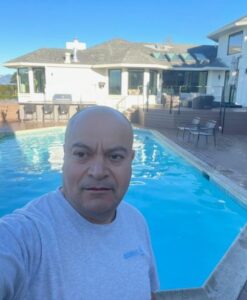 Rudy Reyes
Rudy Reyes 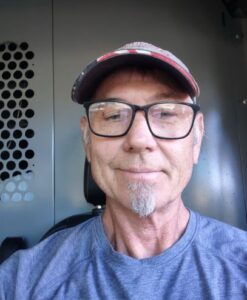 Mark Harlan
Mark Harlan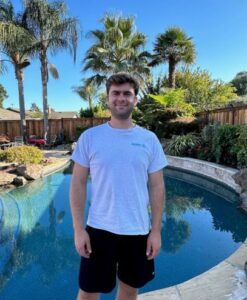 Kevin Hall
Kevin Hall 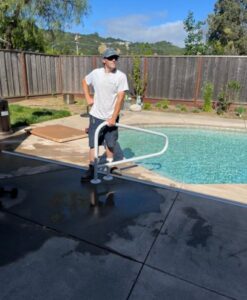 Howard (Howie) Van Lare
Howard (Howie) Van Lare  Chris Cavalerro
Chris Cavalerro 

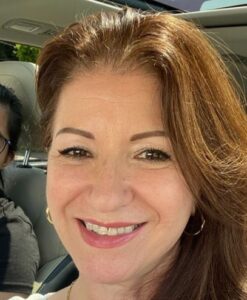 Betty Garmendina
Betty Garmendina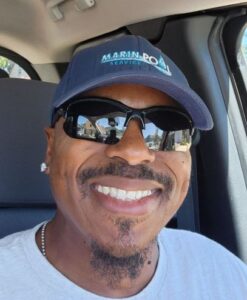 George Wallace
George Wallace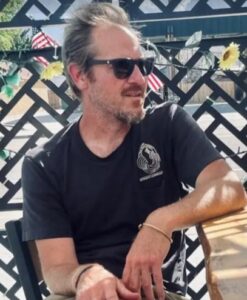 Zach Zastrow
Zach Zastrow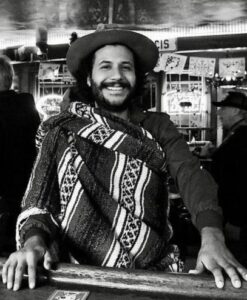 Jorge Salazar Bernal
Jorge Salazar Bernal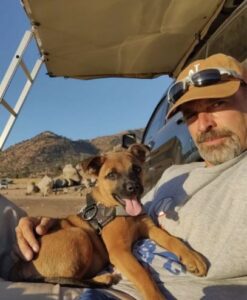 Mike Watson
Mike Watson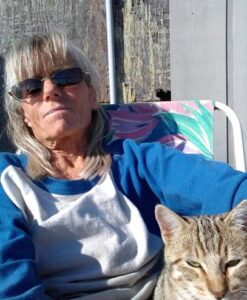 Jane Ciuchta – Hired 2015
Jane Ciuchta – Hired 2015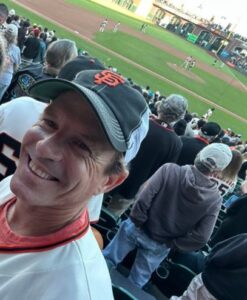 Bruce Muir – Hired 2020
Bruce Muir – Hired 2020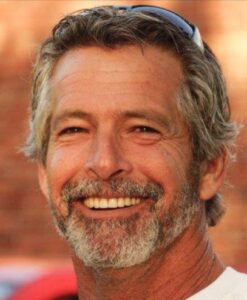 David-Metzger – Hired 2014
David-Metzger – Hired 2014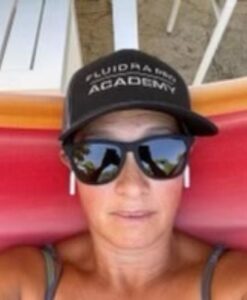 Robin Clarke – Hired 2019
Robin Clarke – Hired 2019 Maddi Davidson – Hired 2022
Maddi Davidson – Hired 2022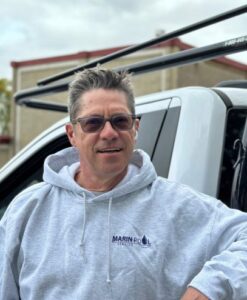 John Albachten – Hired 2015
John Albachten – Hired 2015 Jay Bergmann – Hired 2023
Jay Bergmann – Hired 2023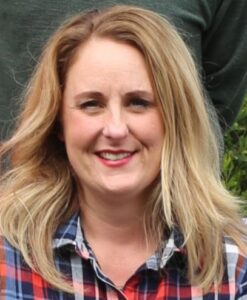 Summer Venegas – Hired 2017
Summer Venegas – Hired 2017 Rebecca Jones – Hired 2015
Rebecca Jones – Hired 2015 Jane Doe – Hired 2014
Jane Doe – Hired 2014